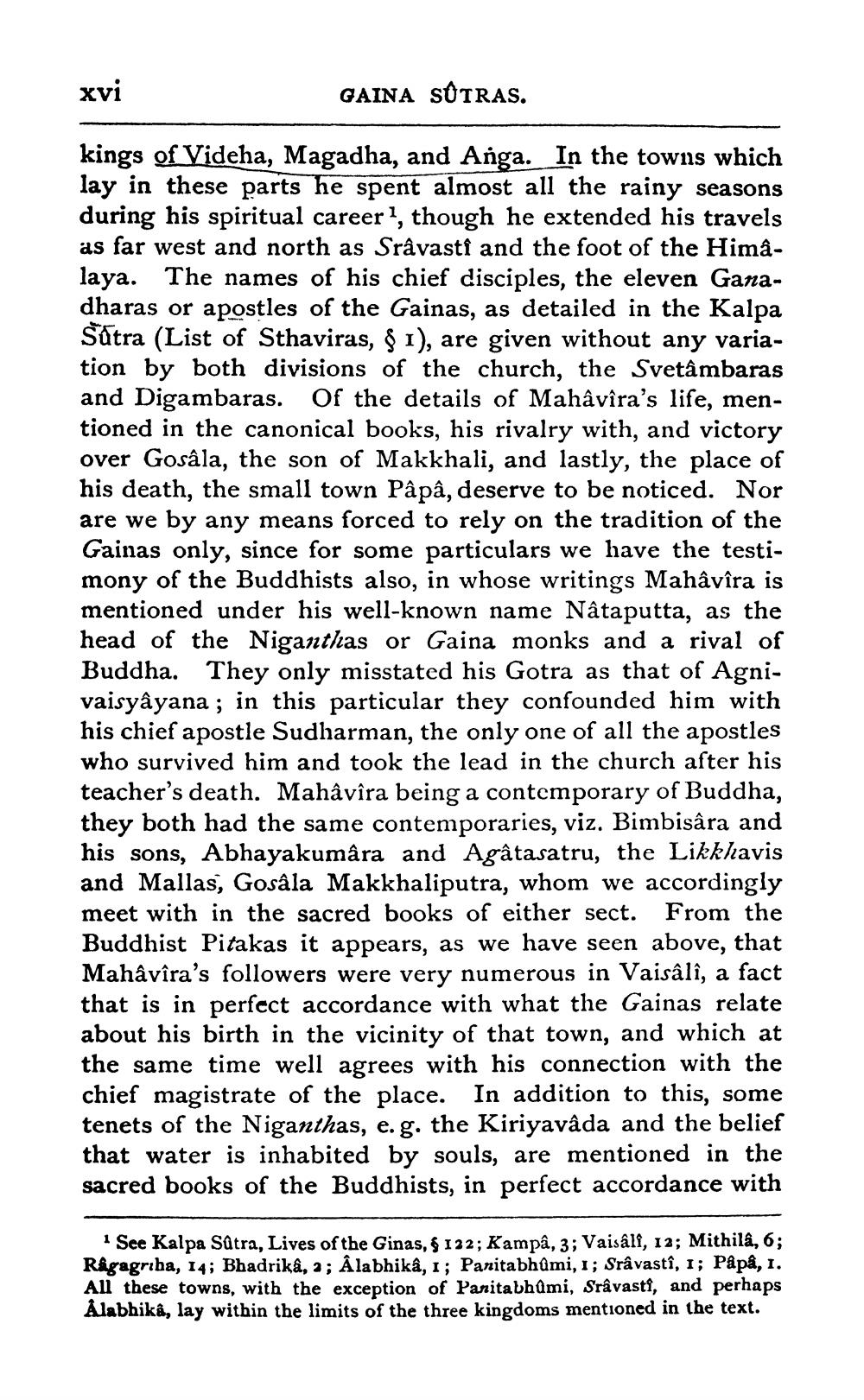________________
xvi
GAINA SÚTRAS.
kings of Videha, Magadha, and Anga. In the towns which lay in these parts he spent almost all the rainy seasons during his spiritual career, though he extended his travels as far west and north as Srâvasti and the foot of the Himalaya. The names of his chief disciples, the eleven Ganadharas or apostles of the Gainas, as detailed in the Kalpa Sátra (List of Sthaviras, $ 1), are given without any variation by both divisions of the church, the Svetâmbaras and Digambaras. Of the details of Mahâvîra's life, mentioned in the canonical books, his rivalry with, and victory over Gosâla, the son of Makkhali, and lastly, the place of his death, the small town Pâpâ, deserve to be noticed. Nor are we by any means forced to rely on the tradition of the Gainas only, since for some particulars we have the testimony of the Buddhists also, in whose writings Mahâvîra is mentioned under his well-known name Nâtaputta, as the head of the Niganthas or Gaina monks and a rival of Buddha. They only misstated his Gotra as that of Agnivaisyâyana; in this particular they confounded him with his chief apostle Sudharman, the only one of all the apostles who survived him and took the lead in the church after his teacher's death. Mahâvîra being a contemporary of Buddha, they both had the same contemporaries, viz. Bimbisâra and his sons, Abhayakumâra and Agâtasatru, the Likkhavis and Mallas, Gosâla Makkhaliputra, whom we accordingly meet with in the sacred books of either sect. From the Buddhist Pitakas it appears, as we have seen above, that Mahâvîra's followers were very numerous in Vaisâlî, a fact that is in perfect accordance with what the Gainas relate about his birth in the vicinity of that town, and which at the same time well agrees with his connection with the chief magistrate of the place. In addition to this, some tenets of the Niganthas, e.g. the Kiriyavâda and the belief that water is inhabited by souls, are mentioned in the sacred books of the Buddhists, in perfect accordance with
See Kalpa Satra, Lives of the Ginas, $122; Kampa, 3; Vaisali, 12; Mithila, 6; Rågagriba, 14; Bhadrika, 3; Âlabhikâ, 1 ; Panitabhūmi, 1; Srâvastî, 1; Pâpâ, 1. All these towns, with the exception of Panitabhomi, Srâvasti, and perhaps Ålabhika, lay within the limits of the three kingdoms mentioned in the text.




